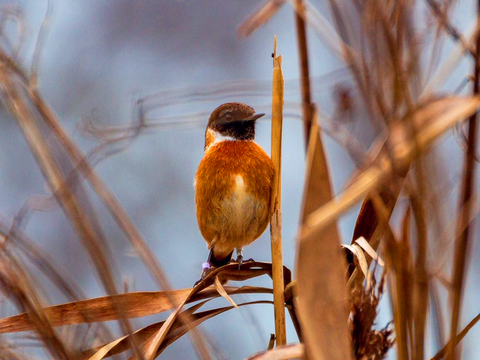A few years ago I wrote about the winter visitors responding to wet weather, with whooper swans being seen up at Rymes Reservoir. Not surprisingly, they are back again, as the Nene and Ouse Washes are full of water. The sounds as well as the sights of the Great Fen can be so evocative and the calm weather has brought this to mind. Visits to the Great Fen in early January, now restricted due to the current lockdown, were accompanied by the trumpeting of the swans, just part of our local 'soundscape', with only the occasional flyover from planes, and the welcome "chak, chak, chak" of the stonechats.
Earlier this month, one of my colleges, Mark Ullyett was out with fellow reserves officer Helen Bailey. While they were busy at work, not only had they come across snipe, on the island at Kings Mere (Rymes Reedbed), but they could also hear, if not see the tinkling calls of teal, drifting across the Fen.
With water levels high, the variety of water features across the Fen are being used by a range of birdlife, from dabbling ducks to little egrets and kingfishers. The heavy rainfall and the consequent rise in the water has done exactly what we want on the restoration land at the Great Fen, topping up reservoirs, expanding the meres, and filling in the shallow surface ‘grips’. The view from the air, as well as the ground is very encouraging, as the Great Fen is designed to cope with this type of extreme weather.

